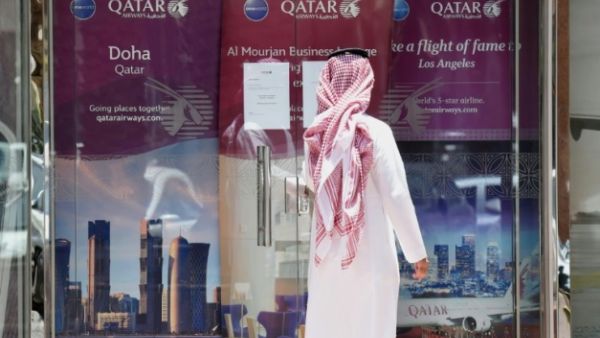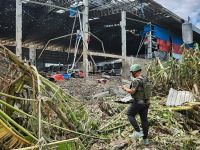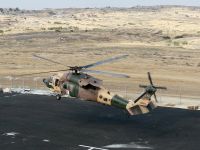Qatar’s economy has shown considerable stability and strength that enabled it to cope with the effects of the siege.
The measures taken by the country succeeded at limiting the repercussions of the blockade and turned it into a challenge which resulted in the expansion and development of different sectors with expectations that the economy continues to excel and develop at a pace fastest in the region. The economy is driven by the energy fields and ongoing initiatives that were accelerated, QNA reported citing various official data.
- Strong Fiscal Position To Bolster Qatar Economy: Report
- Qatar's Real GDP Growth To Reach 3.6% In 2018 Despite VAT: Report
To find an alternative for the blockading countries and to encourage self sufficiency in the past year, the State of Qatar adopted major projects that contributed to strengthening the economy, led by the inauguration of Hamad Port, which is one of the biggest ports in the region. The decision to reduce rent by 50 percent for all investors during 2018-2019 in logistic areas in the southern parts of Qatar, launching a network of highways and logistics centers and special economic zones, in addition to establishing projects aimed at supported innovation and young entrepreneurs as well as expanding economic partnerships with many countries in the region and around the world.
These projects, initiatives and directives combined with the efforts of the public and private sector were reflected in the figures and statistics issued by official entities in the field. Qatar’s gross domestic product (GDP) grew by 1.9 percent during the third quarter of 2017, where the real GDP was estimated at QR208.92bn, compared with the same period in 2016. Qatar’s economy registered one of the fastest growth rates in the region, with GDP between July and September rising nearly 2 percent from the same period last year. Most economic sectors grew by about 4 percent, with the exception of the hydrocarbon sector, which grew by about 20 percent.
With the fastest growing economy in the region, Qatar’s economy is still growing at 2.5 percent, with the government spending for the infrastructure development and facilities for the 2022 FIFA World Cup. The building and construction sector grew by 15 percent, which is a sign of Qatar’s strong economic performance despite the ongoing siege.
In order to achieve a balance industrial development, the government made efforts with a future for supporting industries accompanying the basic industries, where it offered industrial incentives starting with exempting industrial establishments from fees imposed on machinery, equipment, spare parts and raw materials in order to encourage national industry, especially small and medium sized. The government also increased the contribution of manufacturing industries to the gross national income by continuing to develop and support targeted industries in sectors such as the food, pharmaceutical, environmental and knowledge industries, in addition to other industrial sectors.
The results of these initial efforts amounted to about 730 industrial establishments with investments of over QR260bn.
Despite the instability in the world economy and despite the unjust siege imposed on the State of Qatar, its economy has shown resilient performance since the siege began, and macroeconomic indicators have improved markedly, including GDP growth, trade, current account balance and inflation in the safety zone.
- Qatar’s Non-oil Exports Up 35 Percent In August, Despite Blockade
- Qatar’s Trade Surplus Up 32 Percent In 2017, Despite Blockade
Exports and imports rose steadily in July and August of 2017 and total exports increased by 17.7 percent in August 2017 compared to the year before. In addition, there has been no interruption in Qatar’s gas exports, and the country has also maintained a smooth supply of gas exports to its trading partners.
Inflation in the consumer price index CPI in the first nine months of last year was less than 1 percent compared with the same period in 2016, while oil and gas exports continued uninterrupted, new trade routes were established, and the government was keen to achieve a high level of economic self-sufficiency.
According to the latest report by IMF, Real GDP growth is expected to rise from 2.5 percent in 2017 to 3.1 percent in 2018. The Qatari economy is expected to prove resilient, and local sectors will benefit from increased self-reliance.
By August, the latest available trade data showed imports rebounded by 40 percent, close to the pre-seige level, reflecting rapid adaptation to the situation, as well as the creation of alternative sources of import and the establishment of new trade routes. The value of non-oil exports to all countries of the world during the month of November 2017 was about QR1.8bn, compared with QR1.7bn during October, registering an increase of about 5.9 percent, compared with QR1.8bn during the same month of 2016, The total value of non-oil exports during the first eleven months of last year was QR16.8bn.
With regard to the tourist sector, Qatar aspires to make it a main engine of its economic growth and attract more than 7 million visitors annually by 2030 as part of its economic diversification strategy away from the total dependence on the energy sector. The total revenue of tourists’ spending in Qatar will reach $11bn, up from $ 1.3bn in 2012, and the proportion of leisure tourists to 64 percent, up from 27 percent in 2012.
This year, Qatar aims to rank the 35th globally in the “Competitiveness of Travel and Tourism” to increase the sector’s contribution to GDP to $3.bn, reaching a total of 2.4 million international tourists and 1.7 million domestic tourists. In addition to receiving a million tourists to come to entertainment by the same year and to attract half of this figure through the cultural performances offered by the country.
Qatar’s efforts in the tourism scene are being followed by the opening of representative offices in several capitals, from London to Paris to Berlin, as well as the opening of a representative office Southeast Asia market with special focus on Singapore, Malaysia and Hong Kong.
The blockade failed to stop the tourists inflow into Qatar. The first half of 2017 witnessed a growth in the number of tourists visiting Qatar with expectations of an increase in this number in the coming period, especially after the announcement of the exemption of citizens of 80 countries to obtain a visa to enter the country, after the Qatar Tourism Authority has worked on many initiatives and promotional campaigns to attract tourists to ensure the prosperity of the sector. - The Peninsula








